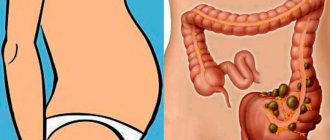How is the date determined?
The date of a caesarean section depends on whether it is performed as planned or emergency. If the need for surgical intervention is known in advance, for example, the fetus is malpresented or the woman has an anatomically narrow pelvis, then the operation is scheduled several days before the expected date of natural birth.
Sometimes a caesarean section must be performed before labor begins (with placenta previa). The operation is scheduled at 38 weeks, when there is no longer a threat to the baby’s health.
There are situations in which a woman’s health condition does not allow her to carry a child to term. For example, with severe gestosis that cannot be treated. The condition is accompanied by the development of edema, disturbances in blood circulation and kidney function, the appearance of convulsive seizures with loss of consciousness and respiratory arrest. In such cases, delivery is performed several weeks or even months ahead of schedule.
An emergency caesarean section may be performed if complications develop before or during natural delivery. For example, with the appearance of severe bleeding, uterine rupture, acute oxygen starvation of the fetus, premature rupture of amniotic fluid.
What then
I woke up from anesthesia in the intensive care unit (sorry, in the “postpartum intensive care unit”). I wanted to cry, which I did. She lay there and sobbed. To the staff’s question – out of happiness? She answered that no... There was no smell of happiness there. I was in painful shock, I didn’t know what or how, where my husband was and where the child was... My husband rushed quickly, sat with me, held my hand and wiped away my tears... Later he brought Egorka. Since Egorushka took my blood type (Mishka and I have a group conflict), I was allowed to feed him, which I did.
After the Caesarean, Egorka was under oxygen for some time (mother’s anesthesia is a vile thing :((), in the children’s department. They washed, weighed, and cut his son’s umbilical cord in front of daddy, but without his participation.
A few hours later, all three of us were transferred to our shared room. I was lying there, and Mishka was busy with Yegorka. In general, all these days he was my son’s mother, father, and everything he could.
The most terrible ones (after the anesthesia didn’t work, obviously) were the next 2-3 days...
I was lying with a urinary catheter, there was a bottle underneath, into which this catheter was lowered... They put a drip in me, they poured a lot of things into me (the blood loss during the operation was 700 ml...). I received 8 injections a day (my butt is still a complete bruise). Through the catheter that remained from the epidural, I was injected with Novocaine twice a day for two more days to anesthetize uterine contractions (Novocaine acted for no more than 10 minutes, but no one believed me and they stubbornly injected it again and again). By the way, it is administered to EVERYONE after a cesarean with an epidural. Because it “starts” the intestines to work, makes it possible to eat (and without it, like, everything would be asked to come out). In short, uterine contractions did not allow me to sleep at all, I cried and moaned, but they stubbornly did not believe me :(. At the end of the second day, tired of my “whining,” they injected me into my butt with some other painkiller. It worked. They removed the catheter for me from the back and stopped pouring novocaine in vain. But I abstained from the injection the rest of the time (and they were ready to give it to me at the first request). I abstained because my butt simply could no longer withstand additional injections.
What happens before surgery?
When a caesarean section is performed as planned, the woman is sent to the maternity hospital a few days before the operation. Doctors conduct an examination, determine the child’s readiness for birth, and assess the condition of the pregnant woman.
18 hours before the procedure you need to stop eating and drinking. This is necessary to ensure that the contents of the stomach do not enter the respiratory tract.
An enema is given before the operation. If a caesarean section is an emergency, gastric lavage may be performed. The woman is then taken or wheeled to the operating room. Direct preparation for the operation includes installing a catheter in the bladder, treating the abdomen with a disinfectant solution, and administering anesthesia.
Anesthesia can be general or regional. The first type includes intravenous, mask and endotracheal anesthesia. The second includes epidural and spinal.
During general anesthesia, an anesthetic is first injected into a vein, and then an anesthesia mask is put on the woman, and consciousness is turned off. Doctors then insert a ventilator tube into the trachea, through which inhalational anesthetic can be administered.
During regional anesthesia, the woman remains conscious, so before its introduction, the lower part of the body is fenced off with a screen. The difference between spinal and epidural anesthesia is where the painkiller is injected: into the spinal cord or into the dura mater.
The procedure is almost the same: first, an anesthetic injection is given in the lower part of the spine, then a special needle is inserted. During spinal anesthesia, the anesthetic is immediately delivered through it (the entire dose is administered). With an epidural, a catheter is inserted into a needle, through which medication is delivered throughout the operation. When the injection and needle are administered, pain may appear, but after the drugs begin to act, the pain goes away. Read more about the differences between epidural and spinal anesthesia →
Caesarean section: what to expect after surgery?
In modern obstetrics, cesarean section is the most frequently performed delivery operation. It is done under general or regional anesthesia (spinal or epidural anesthesia - with these types of anesthesia, the anesthetic is injected into the spinal canal at the lumbar level).
During this anesthesia, only the lower part of the body is anesthetized. The expectant mother is conscious during the operation and can hear and see her baby immediately after birth. After the baby is removed, the woman is often given medication to help her sleep for the remainder of the operation.
In this case, surgery is easier to tolerate. Awakening occurs on the operating table. In this case, as a rule, the woman feels good and does not feel weak or faint.
And when general anesthesia is used, the woman comes to her senses within 30–60 minutes after the operation.
It doesn’t hurt at all. Before the operation, a woman is inserted into the bladder, as well as a catheter (thin tube) into a vein in her arm. The catheter from the bladder is usually removed at the end of the first day; this procedure is completely painless. The catheter is in the vein of the elbow until there is a need for intravenous administration of drugs.
The first day after caesarean section - intensive care ward
After the operation, the woman is transferred to the intensive care ward, where she is under the supervision of medical staff. The ward is equipped with equipment that makes it possible to constantly monitor the condition of the young mother, and, most importantly, her well-being is monitored by an obstetrician-gynecologist and an anesthesiologist-resuscitator.
After the operation is completed, an ice pack is applied to the lower abdomen for 1.5–2 hours in order to prevent bleeding and the formation of postoperative hematomas (hemorrhages), improve uterine contraction, and relieve postoperative tissue swelling.
2–3 hours after the operation, the woman needs to begin to move her arms and legs, and turn around in bed. You are allowed to sit down and walk around the ward 5–6 hours after the operation.
After a caesarean section, a woman is given a number of medications:
- intravenous fluids are administered to replenish blood loss and restore water and electrolyte balance. After surgery, as a rule, an intravenous catheter (a tube inserted into the cubital vein) remains. Liquid flows through this catheter using a dropper. If the cesarean section operation was completed without complications, the drip remains in place for 2–3 hours;
- Narcotic analgesics are prescribed, since the pain in the suture area can be quite severe. These drugs are administered 1–2 times a day for the first 2–3 days, and then gradually withdrawn. They provide the necessary degree of pain relief;
- uterine contracting agents (oxytocin) are administered intravenously into a dropper or intramuscularly 2 times a day;
- prevention of infectious postoperative complications after cesarean section is carried out using antibacterial drugs. The first dose of antibiotic is administered intravenously immediately after ligation of the umbilical cord and again 6–12 hours later during the first day after surgery. If a woman belongs to a high-risk group for the development of infectious and inflammatory complications after cesarean section (for example, if genitourinary tract infections were detected during pregnancy, more than 12 hours have passed from the moment of rupture of water before surgery, etc.), the introduction of antibacterial drugs continue for 5–7 days. If the operation was planned and passed without complications, then a single administration of antibiotics during the operation is possible. In any case, the use of antibiotics during and after surgery, as a rule, does not affect the ability to breastfeed. If it is necessary to use antibacterial drugs that are incompatible with breastfeeding, the doctor will definitely tell the young mother about this and explain how to behave in order to maintain the possibility of feeding the baby with breast milk after treatment.
On the first day after cesarean section, therapy is carried out aimed at restoring intestinal function. To do this, stimulants of intestinal contractility (potassium preparations, etc.) must be added to the administered solutions. At the end of the first - beginning of the second day after surgery, a cleansing enema is prescribed to activate the intestines.
On the day after a cesarean section, you are only allowed to drink and not eat. This restriction is necessary in order to minimize the load on the gastrointestinal tract. You can drink water with lemon juice or still mineral water.
In the early postoperative period, the formation of blood clots in the vessels of the lower extremities is prevented: medications are administered to prevent the formation of blood clots, leg bandaging before surgery or the use of special compression stockings is recommended - this measure improves venous outflow from the legs, helping the movement of blood through the veins. It is advisable to wear elastic bandages or stockings for at least seven days after childbirth.
If the operation went well, the mother and baby have no complications, then for the first time the baby can be brought to the intensive care ward for feeding, however, in most maternity hospitals this is not accepted, and more often the baby is brought to the mother in the postpartum ward.
After caesarean section: postpartum ward
At the end of the first - on the second day after a cesarean section, the woman is transferred to a regular ward of the postpartum department. She is allowed to sit down and walk around the ward.
Also on the 2nd day, the administration of infusion solutions continues.
In the case of using medications that can have a negative effect on the newborn, breastfeeding is recommended to begin later, after their effect has worn off.
Within 6–7 days, the attending physician examines the postoperative suture, and the nurse bandages it once a day and treats it with antiseptic solutions. The sutures are usually removed 5–7 days after surgery.
To assess the condition, the young mother is prescribed various blood tests. On the 5th–6th day after the operation, an ultrasound examination of the pelvic organs is performed, which allows one to judge the size of the uterus, the condition of postoperative sutures, the presence of hematomas, blood clots, the size and contents of the uterine cavity.
After childbirth, the uterus is an extensive wound. The healing process is accompanied by the presence of discharge from the genital tract - lochia.
After a cesarean section, just as after a natural birth, lochia first comes out bloody, then sanguineous (brownish-pink) and will be released for 6-8 weeks after birth.
A woman is recommended to toilet her external genitalia after each urination or defecation, and change a sanitary pad every 2-4 hours.
Features of nutrition after cesarean
The load on the gastrointestinal tract in the postoperative period should be increased gradually. On the second day, you can eat boiled meat, porridge, low-fat broth, and drink sweet tea. Starting from the third day, the mother can afford more nutritious nutrition, taking into account breastfeeding.
Belly support after cesarean
Immediately after transfer to the postpartum ward, you can start wearing a postoperative bandage. It is worn over an aseptic dressing. A postoperative bandage fixes the sutures, abdominal muscles, reduces pain in the suture area and the likelihood of hernias. The bandage must be worn for 2 months after surgery.
Breastfeeding after caesarean section
Breastfeeding is allowed depending on the traditions of the institution, the condition of the mother and child on the 1st–3rd day after surgery.
The formation of lactation after a cesarean section is almost no different from that in women who gave birth naturally.
If the operation was planned (performed before the development of spontaneous labor), then milk may come not on the 3-4th, but on the 4-5th day, but colostrum begins to be released immediately after the operation.
It is most convenient to feed the baby lying on his side in the first days after a cesarean section. In this position, the postoperative suture will be subject to the least impact. In the future, it is possible to feed the baby while sitting or standing.
In the normal course of the postoperative period, the mother is discharged from the maternity hospital on the 6th–7th day.
After returning home
10–12 days after discharge from the maternity hospital, it is advisable to visit an obstetrician-gynecologist at the antenatal clinic to make sure that recovery after surgery is proceeding normally.
Final recovery after caesarean section
Final healing of the postoperative wound on the uterus and scar formation occur within 8 weeks after birth. During this time, it is recommended to visit your obstetrician-gynecologist again. In this case, it is imperative to do a control ultrasound examination of the pelvic organs to check the condition of the uterine cavity and postoperative scar.
Menstruation after a cesarean section is restored in the same way as after a natural birth. If a woman is breastfeeding, then menstruation returns 6-12 months after birth, in cases where the child is bottle-fed - usually 8 weeks after birth.
When resuming sexual relations, it is necessary to use contraceptives, which your doctor will help you choose.
An abortion performed within 1–2 years after surgery significantly worsens the prognosis of subsequent pregnancies.
It is believed that the scar on the uterus reaches its optimal state (complete restoration of the muscle layer) 2–3 years after surgery. It is after this period of time that it is recommended to plan a subsequent pregnancy.
Useful tips
- After cesarean section, sexual rest is recommended for 2 months after surgery.
- For 2 months after surgery, it is not advisable to lift weights exceeding 3–4 kg (the weight of the child).
- Be sure to follow the rules of personal hygiene: it is advisable to take a shower at least 2 times a day, and do not rub the seam area with a washcloth.
After a shower, once a day it is recommended to treat the area of the postoperative scar with antiseptic solutions (diamond green, 70% ethyl alcohol solution). After treatment, a disposable antiseptic bandage is applied to the suture area to prevent friction of the suture on clothing. After the crusts have completely disappeared (on average 10–14 days after surgery) in the area of the postoperative suture, the bandage may not be applied in the future. - The menu of a woman who has undergone a cesarean section and is breastfeeding should include a sufficient amount of proteins, since they are the main building material for the synthesis of immune factors and hemoglobin.
Proteins are also found in large quantities in breast milk. A lot of protein is found in meat, fish, cottage cheese, milk, and cheese. In this case, meat and fish should be lean, boiled or steamed. The cheese should be mild. - For 2 months after surgery, you should not exercise your abdominal muscles, as there is a risk of sutures coming apart.
But after 1 month you can begin light physical exercises aimed at restoring the overall tone of the body. To begin with, you can study for 15–20 minutes, then increase the study time to 40 minutes a day.
How is a caesarean section performed?
The operation is performed in several stages:
- the doctor makes an incision in the abdominal wall, more often a transverse one above the pubis, less often a longitudinal one from the navel and below;
- removes the child by the head, leg or pelvic fold;
- gives the baby to the obstetrician, cuts the umbilical cord between the clamps;
- removes afterbirth;
- sews up the incision.
When a caesarean section is performed under general anesthesia, the woman does not experience any sensations, as she is in an unconscious state. With regional anesthesia, sensation is lost from the chest to the knees. This feeling often frightens women, as it seems that there are no legs at all or that they are not their own.
Anesthetics not only relieve pain, but also reduce blood pressure, so after administration of the drug, weakness, dizziness, and darkening of the eyes often occur. In rare cases, there may be a feeling of shortness of breath associated with the effect of the administered drugs on the chest muscles, as well as trembling and insufficient reduction in pain sensitivity.
All these conditions (except for trembling and loss of sensation) are corrected by an anesthesiologist: he can inject saline and blood pressure-increasing drugs into a vein, apply an oxygen mask, add an amount of anesthetic, or change the type of anesthesia.
Review: Caesarean section - Only in extreme cases and only for medical reasons!
the ability to give birth to a healthy child when there is a medical need for this;
after the operation it is very painful; a scar remains; restrictions on repeat pregnancy and childbirth;
I never thought that I would write a review about my birth, but today I read a review about a caesarean section, and so many memories came flooding back... Of course, everything described below is my personal subjective opinion, but maybe it will help someone make a decision that will determine their future fate both you and your baby.1.
So, the first thing anyone who is thinking about how best to give birth needs to know and keep in mind is that a cesarean section is an OPERATION. Yes, it’s simple, yes, the most common, but it’s an OPERATION, that is, an incision into your living and very sensitive tissues.
Keep in mind that everyone has a different pain threshold and sensitivity level. Of course, during the operation itself you will not feel absolutely anything, but AFTER...
I am not new to surgery, and I am, in principle, accustomed to pain, but it is impossible to forget what I felt after the operation.
For the first 2 days it is VERY VERY PAINFUL, to the point of tears (getting up, sitting), then it PAINS for two weeks, and then for another two weeks it is very unpleasant.
Some people don’t experience this, but everyone who was in the room with me for 4 days crawled all 4 days.
2. Anesthesia. It can be general, or maybe epidural (if there are no contraindications).
Honestly, I don’t understand why everyone is so afraid of epidural anesthesia - for me, any general anesthesia is worse than partial, with epidural anesthesia you don’t feel anything, but you see everything, and if something goes wrong, you are always aware of what is happening.
Again, I recommend that before giving birth (a couple of months before) you go to a neurologist if you have any problems with the spine (I have a hernia, for example) and get a conclusion that epidural anesthesia is not contraindicated for you. Otherwise, you may not have it done; the anesthesiologist will not take such risks.3. Availability of medical indications.
You should NOT have a cesarean section because you are afraid of pain or because it is fashionable. After a cesarean section it may be more painful than during childbirth. Basically, those giving birth naturally suffer for 12 hours, and those giving birth by Caesarean first get high (don’t feel anything), and then suffer for several days and crawl when women in labor are already running.4. There is no need to go to extremes.
I know there are fans of natural childbirth who believe that children born by cesarean section are unfinished. It is not true. Such children have their own problems (usually related to the neck and natural laziness), but all problems can be solved. Keep in mind that ALL CHILDREN born by cesarean section must be registered with a neurologist.
That is, not everything is as smooth and sweet as it seems at first glance. Caesarean patients have their own neurological problems (I was convinced from personal experience). Today I read, for example, that with a breech presentation (when the baby is with his butt towards the exit), and the weight of the fetus is up to 3500 grams. 100% guarantee of successful natural childbirth. It's all nonsense.
There is a CHANCE to give birth to a healthy child.
But, firstly, there is a chance of damaging his genitals (during such births in boys they are very compressed and then cyanotic), and secondly, show me SPECIALISTS in the provinces who are ready to accept such a natural birth?! If in Soviet times they performed cesareans only in extreme cases, then obstetricians had such experience (several children a year, considering that 2 to 4% of children are born in the breech position), but now all such women in labor are cesareans, and where do they get doctors experience?! It’s good if such children are accepted once a year, and then it’s unlikely. Most likely, such births were only seen in youth.5. HOW THE OPERATION WORKS. The miracle of birth itself takes no more than 5 minutes. All together (from anesthesia to return to the room) – about 35 minutes. During epidural anesthesia, the anesthesiologist asks you to lie in the fetal position and gives an injection in the spinal area (NOT IN THE SPINE, as many are afraid). You will also have an IV and a urinary catheter installed, just in case. Next, there is complete numbness of the entire body down from the chest. After watching enough Hollywood films. I was sure that the doctors would put up a nice screen, but at the level of the stomach they installed an iron rod, on which they hung an old, washed diaper. Here's a screen for you)) You don't see what's happening in the abdomen area, but after 5 minutes you hear a scream, and then you see your miracle) That's why I'm against general anesthesia, because you'll miss this moment... After that, the women in labor are stitched up and taken away to the recovery room. Usually after epidural anesthesia you want to sleep and you will sleep for about 2 hours. Then they will bring the baby to feed. You can decide for yourself about the amount of painkiller, but, of course, the more it is, the more harmful it is for the baby.6. MILK. Everyone experiences a different experience after a Caesarean section, but don’t be afraid. Colostrum is available immediately, and for me personally, milk came on the 3rd day.7. In shared maternity hospitals, the baby is usually delivered on the 3rd day after surgery. In theory, you should be prescribed on the 7th-1st day, but here in Samara they are prescribed on the 4th, when you still cannot walk.8. After a caesarean section there are strict restrictions on food - you can only drink for a day, only broth and jelly for the second day, and mashed potatoes for the third day. All this is done to avoid bloating, which causes extreme pain.9. The scar remains approximately 15 cm long (horizontal) along the bikini line just below the panty line. In general, to briefly summarize: you should agree to a cesarean section only after consultation with a good specialist and only if there are medical indications. I will write: “I recommend” only for those situations when this is a way to preserve the health and life of mother and child.
Health to you and your children)
Source: https://otzovik.com/review_390886.html
How is the postoperative period going?
How the postoperative period proceeds largely depends on the anesthesia used, as well as on the individual characteristics of the woman’s body. All sensations after a caesarean section can be divided into those caused by the effects of anesthesia and those associated with the operation itself.
Consequences and sensations after general anesthesia can be as follows:
- cough and sore throat due to the insertion of an endotracheal tube, loss or hoarseness of voice, injury to the lips, tongue - after incorrect or rude actions of the anesthesiologist;
- headaches and muscle pain, clouding of consciousness, dizziness;
- nausea and vomiting;
- allergic reactions.
Unpleasant sensations may also appear after regional anesthesia; most often they are associated with the effect of the drug on the body and the method of its administration.:
- spinal and headache, tremors in the legs usually disappear after a few hours, in rare cases they continue for several days or months;
- urination may be impaired for several days;
- nausea, vomiting;
- allergic reactions.
The condition of a woman after a cesarean section is accompanied by sensations characteristic of any surgical intervention: pain in the incision area, intensifying during movements, a slight increase in temperature, weakness, dizziness. All these symptoms disappear over time, and if they are severe, they are corrected with medication.
The sensations during a caesarean section depend on the type of anesthesia and the individual characteristics of the body. During general anesthesia, the woman is unconscious during the operation; after the effect of the drugs wears off, unpleasant symptoms may appear. With regional anesthesia, sensations change from the moment the needle with the anesthetic is inserted until the effect of the drug completely stops.
In any case, the postoperative period is accompanied by pain in the incision area, weakness, and sometimes fever and other complications.
Author: Olga Khanova, doctor, especially for Mama66.ru
How it all started
On August 13, at night, I felt the urge to go spend the night at my husband’s apartment (where he was doing renovations for the second week, and therefore I didn’t see him at all...). At 11 pm, despite my mother’s entreaties “not to do anything stupid,” I took a car and went to my husband. Arrived well. In the apartment I lay on the sofa for a couple of hours while my husband was laying tiles in the bathroom. Just when he finished and we decided that it was time to go to bed (it was at one in the morning), I, still lying on the sofa, felt something inside me “pop” (not burst, but just hooted). And somehow I immediately realized that it was the bursting of the amniotic sac. I got up, came to my husband and calmly said that “it seems that the waters will break.” Following this, it began to pour out like a bucket.
Since all the things of the child, mine and my husband’s were in a completely different place, my documents and exchange money were too, it was necessary to urgently go for all this. My things weren’t packed (I didn’t expect it to happen like this)… In general, we called our friends so that they would take us to get our things, and then to the maternity hospital, and while we were waiting for the car, I warned my mother that I would now go pick up our clothes , and called the doctor. At first they kicked me around a little (the doctors sent me to each other - it was not me who was on duty at the maternity hospital, but a doctor like that), until I got tired and said that I didn’t care who was on duty where and I wanted to know what I should do in this situation. In short, the doctor, who was not actually on duty, “took” me. I was ordered to come for her home by car by five o'clock in the morning (and it was already two o'clock).
My contractions started just in the car. Irregular (this is what happens with breech presentation). Sometimes for 20 seconds, sometimes for three and a half minutes. As far as I know, theoretically “normal” contractions are 45 seconds long. So this is what I will say: it is REAL to endure 45 seconds. But 3-3.5 minutes... damn... In short - ass (sorry).
We came to get our things, threw everything we had into our bags (thank God that at least I had time to wash the children’s things the day before!), my husband washed himself (after the renovation!), I also tried to rinse myself (but with contractions and constantly flowing water it was unreal). We even tried to shave me (you know where), but little came of it.
By the way, the intestines cleansed themselves even when the first “portion” of water left.
We went to get a doctor. The contractions were terrible in terms of pain (those that were long; short ones were quite bearable). After picking up the doctor, we arrived at the maternity hospital.
Analyzes
A few days ago they tried to take blood from a vein for analysis... My once super veins hid, and despite the fact that the nurse managed to get into the vein, this vein did not want to give up blood :(. The result is that the vein in the second arm was also perforated. The situation is the same. There is zero blood. Now there are terrible bruises on both arms, and the maternity hospital was left without my tests









